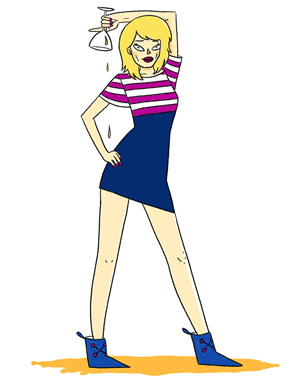
Photo: Tourism Western Australia
An Auzzie with Italian roots planting Spanish and Portuguese grape varieties in Western Australia. Too tempting..the English nose trotted along to Australia House in London – a great mothership of a building straddling The Strand. After a quick frisk down by the security guards she was in and nosing around.
I do admire a sense of adventure. This chap David Mazza, whom I’ve just met, plants two or three rows of six different varieties used for Rioja and er ..port…on a patch of just four acres across different soil types..the idea was to just “see how it goes”…you can almost fill the addendum “well if it’s rubbish we’ve still got the 4X.”
Well far from producing rubbish, it was an inspired move to set up shop in Donnybrook in the Geographe part of Western Australia, which lies south of Perth. It’s different from the Margaret River region, famed for its seductive Cab Sav. It’s less maritime and has hot summer days and cool nights…and wet winters..sound familiar – no wonder these Latin grapes love it here.
First a Bastardo (2009), never tasted this before…traditionally used in Port blends, low in colour and tannin. “We planted it in the chocolate soil,’ remarks David and immediately I feel predisposed to like this rosé…helped along by its pale complexion..an inviting light, onion skin colour. I hate a big syrupy rosé and this is the antithesis..fragrant with strawberry notes, crisp and fresh on the finish.
Next up – Tempranillo. Here we are on familiar territory. The 2007 starts with an alluring, but fresh strawberry sweetness and developed coffee and tobacco notes, wrapped up in soft tannins. The 2010 has juicy red cherry and summer fruit – fresh with a touch of tar and leather, again it’s nice and fresh. The 2011 strays into ‘old-fashioned’ territory…some older barrels may be bringing something slightly grubby to the party.
David considers winemaking as “more art than science..” and has experimented with several different winemakers. They de-stem, use punch down and age in Burgundy size barrels with no new oak. This is perfect to showcase the differences in the varieties, but I think the barrels used for some 2011 were a tad past it. The 2012 is a newer batch.
Moving on to the Tinta Cao 2011..oh my…this is a structural wine, powerful and muscular – showing its more feminine side in an aromatic finish. Needs time to age, but we like it a lot…
Graciano (2009), which plays in the Rioja ensemble, was quite comfortable going solo, sweet, soft and juicy with ripe cherries…slightly rustic in an appealing sort of way.
Cinque – a blend of five – is deep, sweet and succulent with summer fruits; peppered with dark chocolate and spice and showing plenty of bite and tension.

Photo: Tourism Western Australia
David was keeping a few bottles ‘under the table’ from where he unearthed a Touriga Nacional, a classy Port varietal. He made just one barrel in 2007. “I loved it, but it hated wet feet, so we replanted it on pebbly soil.” I tried the 2012. This is the business. Smoky and deep, rich dark chocolate. Savoury and sweet. A strong wine with a burly density. The Touriga Nacional has snuggled down into its patch of pebbly soil and is clearly quite at home.
I don’t just admire the pioneering spirit that drove David Mazza to plant his Spanish and Portuguese varieties in the vast expanse of WA, but I love the result of these Latin grapes in New World turf, sprinkled with a bit of Auzzie madness… Go try.
www.mazza.com.au (UK stockists include www.thewinesociety.com and www.bbr.com)
The English nose speaks with David Mazza, an Australian making wines from Portuguese and Spanish grape varieties in Western Australia

